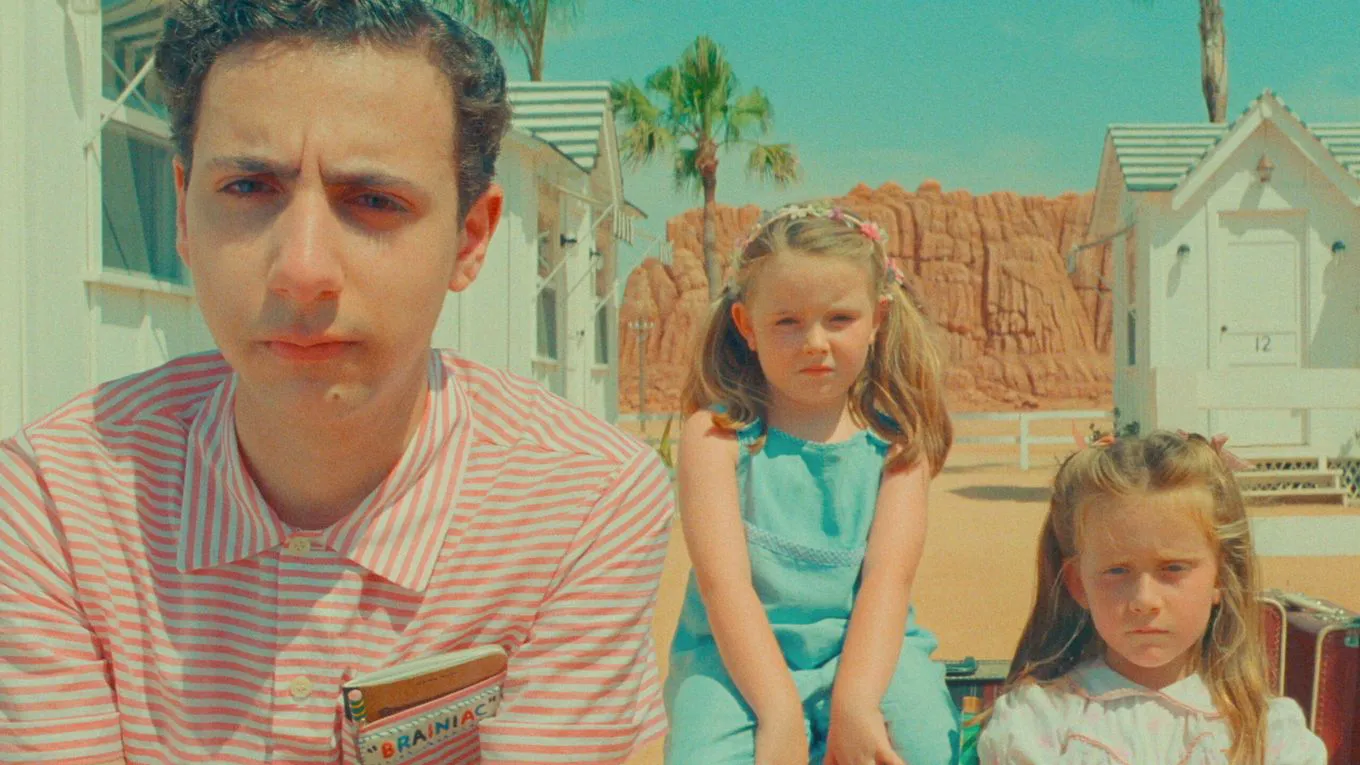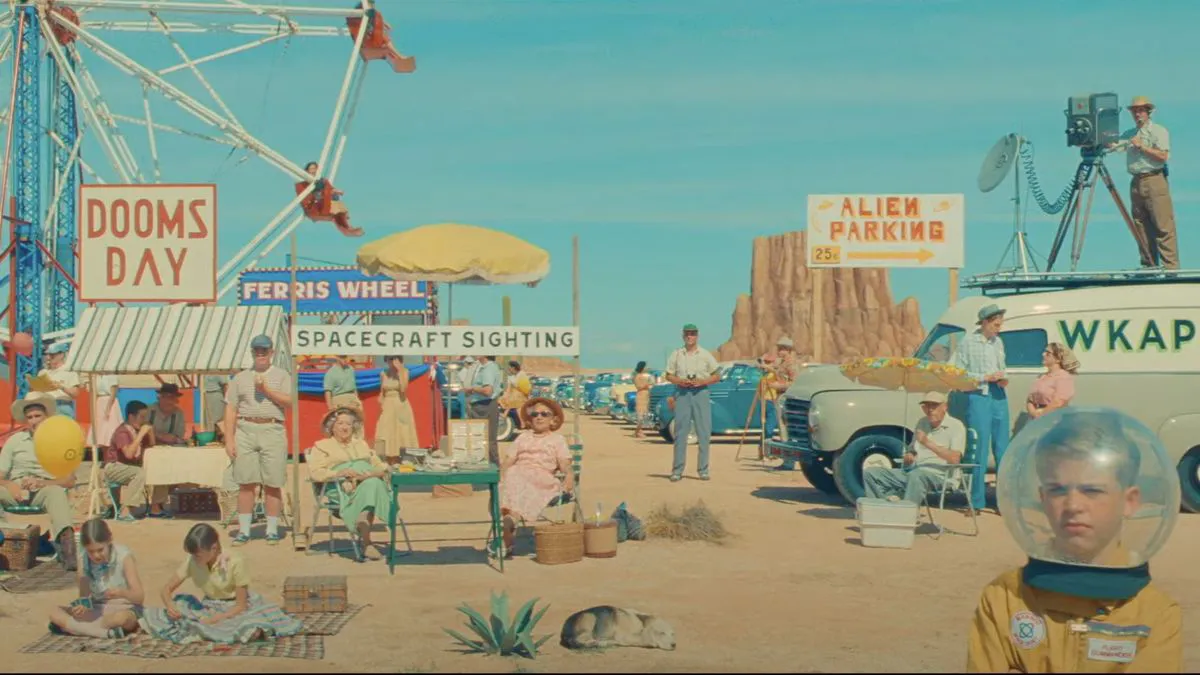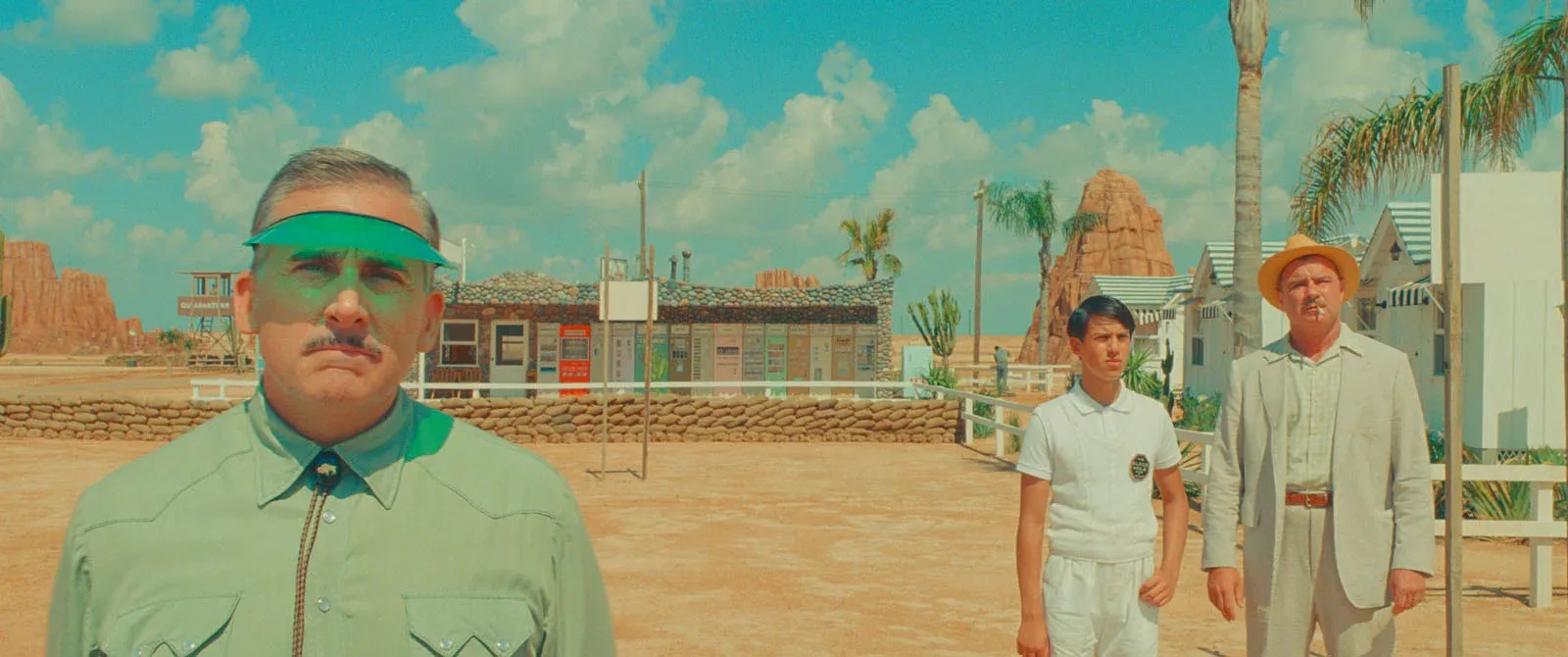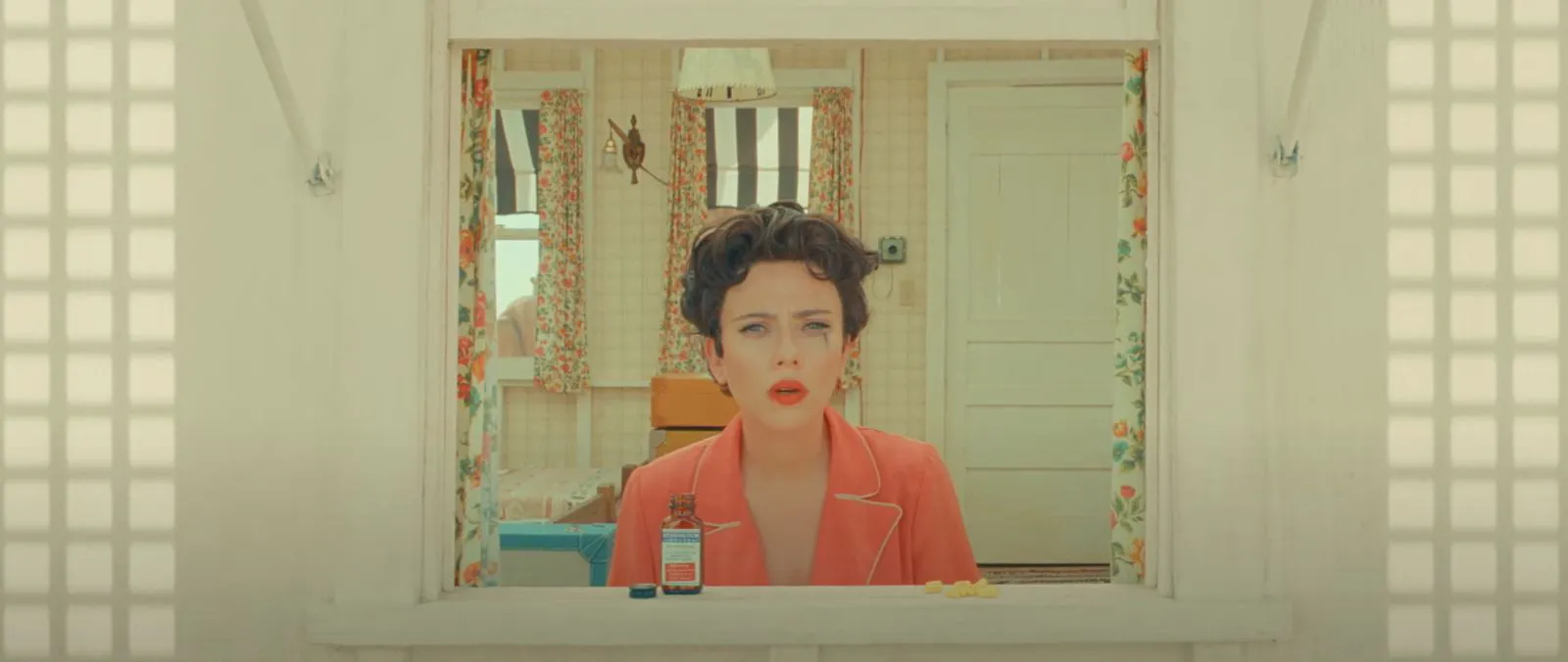“Asteroid City” (or rather, “Asteroid Town,” as the locals only have one landmark to remember) marks Wes Anderson’s third film to grace the Cannes Film Festival. “Moonrise Kingdom” and “The French Dispatch” also premiered on the French Riviera. The latter film so exhausted critics, audiences, and casual observers alike that the unconditional love for the director’s dollhouse vignettes gave way to weariness and irritation. “Asteroid City” is preemptively criticized for self-repetition and a form that overshadows meaning. The conclusions are predictable: Wes Anderson has made a film that is unusual for him, but not enough to win back the sympathy of those who have lost their loyalty to his directorial style.

Jake Ryan in a still from “Asteroid City”
A Play Within a Play
Like “The Grand Budapest Hotel,” “Asteroid City” is a multi-layered construction. A late-night television host (Bryan Cranston) – a Rod Serling type in a perfectly tailored jacket – invites viewers to delve into the production of a play about a wondrous little place abandoned in the sands. When the monochrome of the playwright’s (Edward Norton) and director’s (Adrien Brody) presentation recedes, the “Twilight Zone” is flooded with the ochre color of Asteroid City’s windy pastoral setting. The Cold War, 1955: the crater left by a fallen celestial body becomes a center of attraction for “young stargazers” – schoolchildren-inventors-high achievers, fascinated by the secrets of the universe, while the surrounding desert becomes a testing ground for atomic bombs and other government experiments. Somewhere between constructive and destructive discoveries lie the sorrows of small people who find themselves in a zone of quarantine (both literal and empathetic).

Still from “Asteroid City”
A Town on Pause
What is most surprising is that the film is almost devoid of momentum and lively musical chords. The air in Asteroid City is saturated with midday heat, 1950s hits play only in the background from radios, and the main theme breaks through in television block interludes. Life in the town, if not stopped, is paused: the languid anticipation is interrupted only by conversations about the existence of UFOs, lectures by a professor (Tilda Swinton), and leisurely revelations by war photographer Auggie Steenbeck (Jason Schwartzman) and actress Midge Campbell (Scarlett Johansson, who played Janet Leigh in the biopic of the master of suspense, remains true to Hitchcockian ladies even with Anderson). Auggie lost his wife and three weeks later must tell his children (a son – a cosmic high achiever – and three daughters – half-aliens-half-witches, in their own words) that their mother is no more.

Steve Carell in a still from “Asteroid City”
Loss and Longing
Before “Asteroid City,” Anderson’s most painful film was perceived to be “The Darjeeling Limited”: three brothers, a year after their father’s death, embark on a spontaneous and chaotic journey through India. Sixteen years later, instead of rebirth, shedding the ballast of heavy baggage, and self-forgetful movement forward on the rails of life, Wes offers a stop and the experience of loss in spiritual stagnation. When his wife died, even atomic bomb explosions are no more than interference on the waves of radio “sadness.” According to Auggie, it is easier for atheists to believe not in heaven and hell, but that those who have left us remain somewhere in the stars (almost like in “The Lion King,” minus the aliens). At least, that’s what he himself was told as a child. Forcing a diverse audience to freeze, Anderson leads the camera, which circles between static figures, flying around silhouettes and capturing miniature scenes-incidents in the background. Unobtrusively and seemingly accidentally, somewhere between chatter, smooth transitions, and close encounters of the third, first, and any degree, the director sadly says that the most important closeness is doomed to end in loss, but separation is not so terrible if you want to believe in something else.

Scarlett Johansson as Midge in a still from “Asteroid City”
Anesthesia for the Soul
Conspiracy theories, government conspiracies, aliens, religion, laws of logic, secrets of the universe, fear of nuclear war – everyone is looking for their own pill to drown out the pain and want to see something more than an abandoned gas station in a town in the middle of “nowhere.” When the frame leaves Asteroid City and falls into layers of meta-dimensions, Wes somehow resignedly and with bitter irony confesses that his picturesque structures (that very play from the television program), which have become so tiresome to everyone, are also anesthesia. The “Twilight Zone” is not only guests from other planets and a haven for monsters in the dark, but also a gray area inside that captures even in the sunniest town where no shadow falls.
“You can’t wake up if you’re not asleep”: sometimes everyone needs to close their eyes tightly, fall into a daze, believe that the truth is somewhere nearby, and go into quarantine from reality. And then come back.